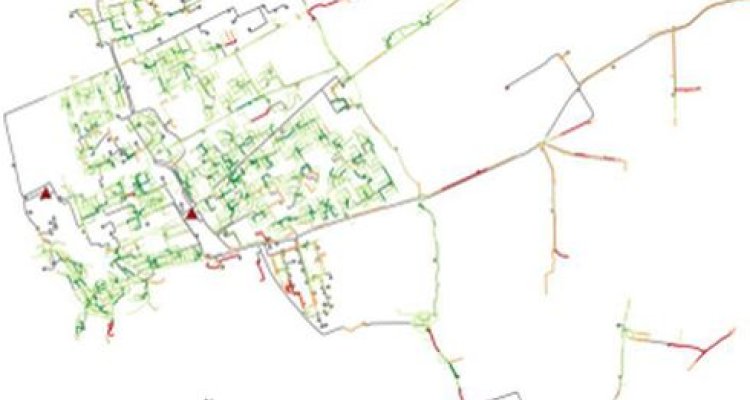
Colloquium
Modeling the spatial economic efficiency of power distribution networks
By Bas van Wiltenburg (the Netherlands)
Abstract
Today’s power system of the Netherlands is characterized by the growing introduction of electric vehicles (EV), heat pumps and distributed generation sources (DG). For grid operators, this causes the need for investment increases, which will result in higher costs of the overall energy supply system and consequently higher tariffs for the customers. Nonetheless, distributed generation sources also introduced new and innovative concepts such as MicroGrid and SmartGrid. In these concepts, customers no longer need to be connected to the national transmission grid and using electric energy generated at the consumption side of the power supply chain. By using MicroGrid and SmartGrid applications, the total costs of the overall energy supply system can be reduced by decreasing network utilization, reducing network losses and prevent new investment in feeder lines, transformers and substations not need to be upgraded or replaced. In order to keep the costs of the grid network as low as possible, this thesis contributes to the problem where SmartGrid and MicroGrid concepts may decrease the total costs of the existing energy supply system.
In this research, a method is proposed which calculates the spatial economic efficiency of the existing grid network in order to determine which parts of the system decrease its total economic efficiency and consequently may be potential for MicroGrid applications. This method involves a network analysis for each customer in the grid network and allocates asset costs to asset dependent customers. The network analysis uses a network graph which includes each individual distribution asset of the grid network. By allocating the grid network costs to asset dependent customers, a ‘heat map’ of relative expensive and less expensive areas of the grid network is derived. By using an iterative greedy algorithm, the economic inefficient areas of the original energy supply system are identified, which at the same time can be applied as MicroGrid system as well.
The costs of the grid network are allocated to the customers based on two different cost allocation methods. The first allocation method distributes the costs of a specific asset linearly over its dependent customers while the second allocation method allocates the costs based on the extent-of-use of the asset dependent customers. A scenario analysis is performed in order to assess the impact of applying the computationally less expensive linear cost allocation method. In addition, the scenario analysis also assesses the impact of using not specific asset costs, as administrated by the financial department of Alliander.
The method was implemented on the power distribution networks supplied by the high-voltage substation ‘Hoorn Holenweg’, located in the municipality of Hoorn, the Netherlands. Results of the method showed that economic inefficient MicroGrid areas were only found in rural and sparsely populated areas. Moreover, the use of not specific asset costs caused a substantial variability in the method’s output. Hence, conclusions is that the current cost data of Alliander does result in very robust and reliable results. Applying the linear cost allocation method resulted in higher cost allocation to low-voltage customers, especially in sparsely populated areas. However, the impact on the number of calculated economic inefficient MicroGrid areas was not significant.
Keywords: Power distribution networks; Cost allocation; Cost distribution; Economic efficiency; MicroGrid